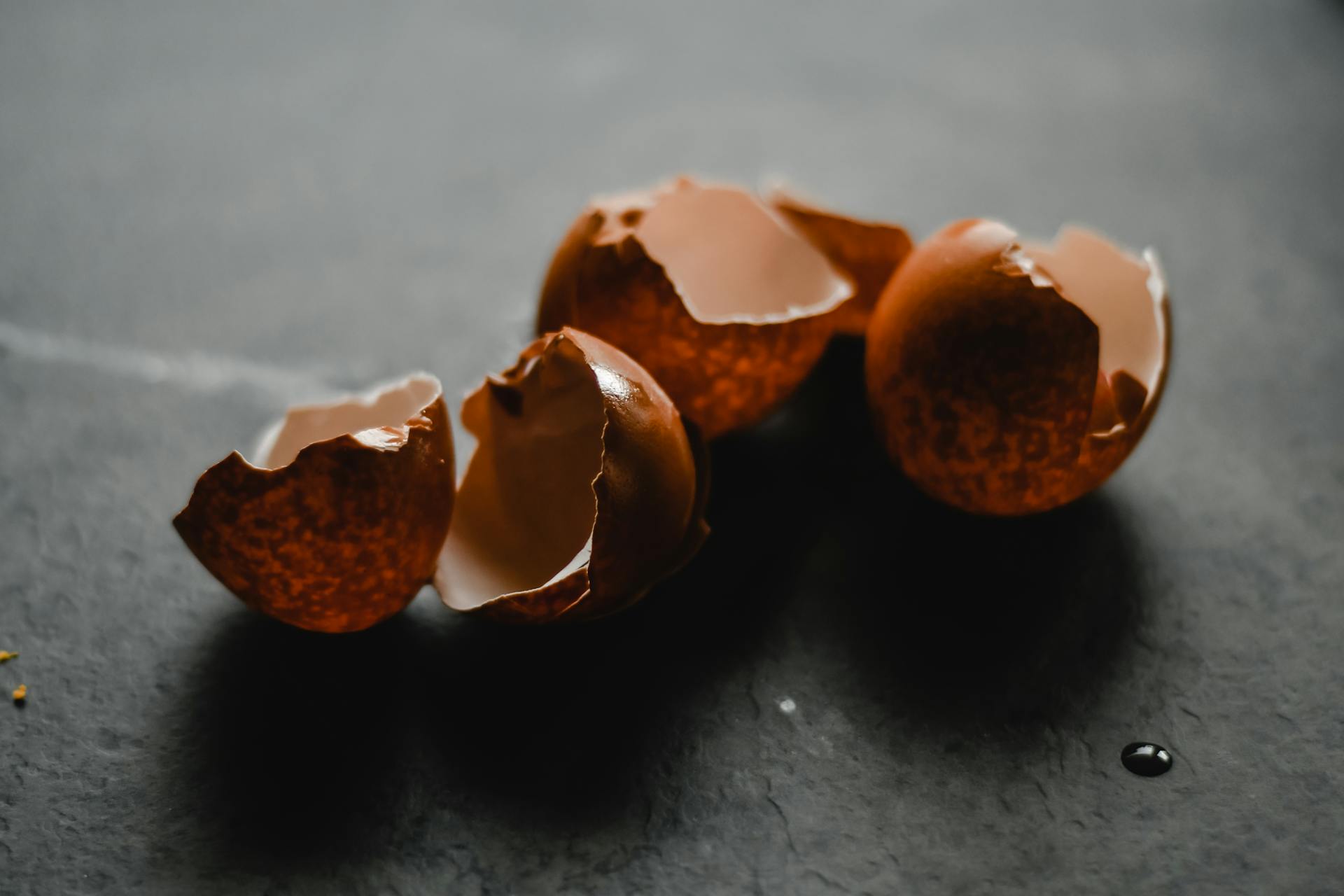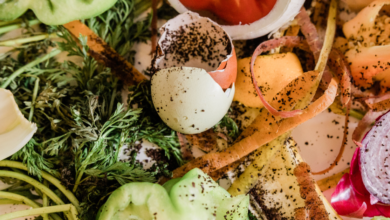Mastering the Art of Bokashi Composting: A Sustainable Solution for Organic Waste Management

In our ever-growing quest for sustainable living, composting has emerged as a game-changer in organic waste management. Among the various composting methods, Bokashi composting stands out as an innovative and efficient technique that has captured the attention of eco-conscious individuals worldwide. This article delves into the intricacies of Bokashi composting, guiding you through its principles, benefits, and practical implementation.
Bokashi composting is a Japanese fermentation process that transforms organic waste into a nutrient-rich soil amendment. Unlike traditional composting, which relies on aerobic decomposition, Bokashi composting employs anaerobic fermentation, resulting in a faster and more efficient process. By harnessing the power of effective microorganisms (EM), this method not only reduces waste but also produces a valuable fertilizer for your garden.
As we navigate through this comprehensive guide, you’ll gain a deeper understanding of Bokashi composting and its potential to revolutionize your approach to waste management. Prepare to embark on a journey that will empower you to transform your kitchen scraps into a sustainable resource, fostering a greener and more eco-friendly lifestyle.
How Bokashi composting works
Bokashi composting is a two-stage process that combines anaerobic fermentation and aerobic composting. The first stage involves fermenting organic waste in an airtight container, known as a Bokashi bin, using a specialized Bokashi bran inoculated with effective microorganisms (EM).
- The Bokashi bran:
- Consists of a mixture of wheat bran, molasses, and a proprietary blend of microorganisms.
- Acts as a starter culture, initiating the fermentation process.
- Introduces beneficial bacteria, yeasts, and fungi to break down organic matter.
- The fermentation process:
- Organic waste, such as fruit and vegetable scraps, is layered in the Bokashi bin.
- A sprinkle of Bokashi bran is added between each layer.
- The airtight lid seals in the fermentation process, creating an anaerobic environment.
- Over a period of 2-4 weeks, the effective microorganisms break down the waste through fermentation.
- The end product:
- The fermented waste, known as “Bokashi pre-compost,” is a partially decomposed, acidic material with a pickled aroma.
- This pre-compost can be buried directly in the garden or added to a traditional compost pile for further aerobic decomposition.
The beauty of Bokashi composting lies in its ability to handle a wide range of organic materials, including cooked foods, meat, and dairy products, which are typically avoided in traditional composting due to potential odor issues and attracting pests.
Benefits of Bokashi composting
Embracing Bokashi composting offers a multitude of benefits that extend beyond the realm of waste management. Here are some compelling advantages that make this method a standout choice:
- Efficient waste reduction:
- Bokashi composting significantly reduces the volume of organic waste, minimizing the amount sent to landfills.
- By diverting organic materials from landfills, it helps mitigate methane emissions, a potent greenhouse gas.
- Odor control:
- The fermentation process in Bokashi composting effectively suppresses odors, making it an ideal solution for indoor composting or small living spaces.
- The acidic environment created by the Bokashi bran inhibits the growth of odor-causing bacteria.
- Versatility:
- Bokashi composting can handle a wide range of organic materials, including cooked foods, meat, and dairy products, which are typically avoided in traditional composting methods.
- This versatility makes it a convenient option for households with diverse dietary preferences.
- Space-saving:
- Bokashi composting systems are compact and can be easily integrated into small living spaces, such as apartments or urban gardens.
- The initial fermentation stage significantly reduces the volume of organic waste, requiring less space for composting.
- Nutrient-rich compost:
- The fermentation process in Bokashi composting preserves and enhances the nutrient content of the organic waste.
- The resulting compost is rich in essential nutrients, making it an excellent soil amendment for your garden or potted plants.
- Simplicity and convenience:
- Bokashi composting is a low-maintenance process that requires minimal effort and time commitment.
- The airtight Bokashi bin eliminates the need for frequent turning or monitoring, making it a hassle-free composting method.
By embracing Bokashi composting, you not only contribute to a more sustainable future but also reap the rewards of nutrient-rich compost for your garden while reducing your environmental footprint.
Also read: A Beginner’s Guide to Composting: How to Start Composting for Beginners
Bokashi composting process step-by-step
Embarking on the journey of Bokashi composting is a straightforward process that can be easily incorporated into your daily routine. Follow these step-by-step instructions to get started:
- Gather your supplies:
- Bokashi bin (a specialized airtight container with a drainage spout)
- Bokashi bran (the inoculated starter culture)
- Organic waste (fruit and vegetable scraps, cooked foods, meat, and dairy products)
- Newspaper or paper bags (for draining excess liquid)
- Prepare the Bokashi bin:
- Place a layer of newspaper or a paper bag at the bottom of the bin to absorb any excess liquid.
- Sprinkle a handful of Bokashi bran over the bottom layer.
- Layer the organic waste:
- Add a layer of organic waste, such as fruit and vegetable scraps, to the bin.
- Sprinkle a handful of Bokashi bran over the waste layer.
- Repeat this layering process, alternating between organic waste and Bokashi bran, until the bin is nearly full.
- Seal and ferment:
- Secure the airtight lid on the Bokashi bin to create an anaerobic environment.
- Allow the fermentation process to take place for 2-4 weeks, depending on the ambient temperature and the amount of waste in the bin.
- Drain excess liquid:
- During the fermentation process, excess liquid may accumulate in the bin.
- Drain this liquid periodically through the spout or tap at the bottom of the bin.
- The drained liquid, known as “Bokashi tea,” can be diluted and used as a nutrient-rich fertilizer for your plants.
- Bury or compost the pre-compost:
- Once the fermentation process is complete, you’ll have a partially decomposed material called “Bokashi pre-compost.”
- This pre-compost can be buried directly in your garden, where it will continue to break down aerobically, providing nutrients to the soil.
- Alternatively, you can add the pre-compost to a traditional compost pile or bin for further aerobic decomposition.
- Repeat the process:
- Once the Bokashi bin is emptied, clean it thoroughly and begin the process again with a fresh layer of newspaper or paper bags and Bokashi bran.
By following these simple steps, you’ll be well on your way to mastering the art of Bokashi composting, transforming your organic waste into a valuable resource for your garden.
Choosing the right Bokashi composting system
With the growing popularity of Bokashi composting, various systems and products have emerged in the market. Choosing the right system can ensure a seamless and efficient composting experience. Here are some factors to consider when selecting a Bokashi composting system:
- Size and capacity:
- Consider the amount of organic waste your household generates to determine the appropriate size of the Bokashi bin.
- Smaller households may opt for compact bins, while larger families or those with substantial organic waste may require larger or multiple bins.
- Material and durability:
- Bokashi bins are available in various materials, including plastic, ceramic, and stainless steel.
- Plastic bins are lightweight and affordable, while ceramic and stainless steel options offer greater durability and aesthetics.
- Ensure the bin is airtight and has a secure lid to maintain the anaerobic environment.
- Drainage system:
- Look for Bokashi bins with a built-in drainage system or spout to easily drain excess liquid during the fermentation process.
- This feature helps prevent the accumulation of excess moisture, which can lead to odor issues or potential leaks.
- Accessories and extras:
- Some Bokashi composting systems come with additional accessories, such as strainers for draining liquid, aerated compost bins for the second stage of composting, or specialized Bokashi bran.
- Consider your composting needs and preferences when evaluating these extras.
- Aesthetics and space considerations:
- If you plan to keep the Bokashi bin indoors or in a visible area, consider the aesthetic appeal and design of the system.
- Compact and sleek designs can seamlessly integrate into your living space without compromising functionality.
- Brand reputation and customer reviews:
- Research reputable brands and read customer reviews to gauge the quality, durability, and overall satisfaction with different Bokashi composting systems.
- Reliable brands often offer better customer support and guidance for successful composting.
By carefully evaluating these factors, you can select a Bokashi composting system that aligns with your household’s needs, ensuring a hassle-free and rewarding composting experience.
Also read: Eco-Friendly Gardening: Learn How to Make a Compost Bin and Turn Your Waste into Nutrient-Rich Soil
Troubleshooting common issues in Bokashi composting
While Bokashi composting is a relatively straightforward process, you may encounter a few challenges along the way. Fear not! Here are some common issues and their solutions to help you troubleshoot and maintain a successful Bokashi composting routine:
- Odor issues:
- If you notice an unpleasant odor emanating from your Bokashi bin, it could be due to several reasons:
- Inadequate Bokashi bran: Ensure you are adding enough Bokashi bran between each layer of organic waste.
- Excess moisture: Drain any excess liquid from the bin regularly to prevent anaerobic conditions that can lead to odors.
- Improper sealing: Check that the lid is securely sealed to maintain an anaerobic environment.
- Solution: Add more Bokashi bran, drain excess liquid, and ensure the bin is properly sealed.
- If you notice an unpleasant odor emanating from your Bokashi bin, it could be due to several reasons:
- Mold growth:
- While some white mold is normal during the fermentation process, excessive mold growth can indicate issues.
- Potential causes include:
- Inadequate Bokashi bran: Insufficient Bokashi bran can lead to improper fermentation and mold growth.
- Excess moisture: Too much moisture in the bin can create an environment conducive to mold growth.
- Solution: Add more Bokashi bran, drain excess liquid, and ensure proper layering and sealing of the bin.
- Fruit flies or pests:
- Fruit flies or other pests may be attracted to the organic waste in your Bokashi bin.
- Potential causes include:
- Improper sealing: A poorly sealed lid can allow pests to enter the bin.
- Organic waste exposed: Ensure all organic waste is completely covered with Bokashi bran.
- Solution: Ensure the lid is securely sealed, and cover any exposed organic waste with Bokashi bran.
- Slow fermentation:
- If the fermentation process seems to be progressing slowly, it could be due to:
- Low temperatures: Colder temperatures can slow down the fermentation process.
- Insufficient Bokashi bran: Not enough Bokashi bran can hinder the fermentation process.
- Solution: Keep the Bokashi bin in a warm area (ideally between 60-80°F or 15-27°C), and add more Bokashi bran if needed.
- If the fermentation process seems to be progressing slowly, it could be due to:
- Excess liquid accumulation:
- If you notice an excessive amount of liquid accumulating in the bin, it could be due to:
- High moisture content in the organic waste: Some organic materials, such as fruits and vegetables, have a higher moisture content.
- Inadequate drainage: Ensure the drainage system is functioning properly and drain the excess liquid regularly.
- Solution: Drain the excess liquid regularly and consider adding a layer of shredded paper or cardboard to absorb moisture.
- If you notice an excessive amount of liquid accumulating in the bin, it could be due to:
By addressing these common issues promptly, you can maintain a healthy and efficient Bokashi composting system, ensuring a continuous supply of nutrient-rich compost for your garden.
Tips for successful Bokashi composting

To maximize the benefits of Bokashi composting and ensure a smooth and rewarding experience, here are some valuable tips to keep in mind:
- Follow the layering technique: Proper layering of organic waste and Bokashi bran is crucial for successful fermentation. Ensure you sprinkle a generous amount of Bokashi bran between each layer of organic waste.
- Chop or shred organic waste: Breaking down larger pieces of organic waste into smaller pieces can accelerate the fermentation process and ensure more efficient decomposition.
- Maintain moisture balance: While excess moisture can lead to odor issues and potential leaks, too little moisture can hinder the fermentation process. Aim for a balanced moisture level by draining excess liquid regularly and adding a small amount of water if the waste becomes too dry.
- Rotate your Bokashi bins: Consider having multiple Bokashi bins and rotating them to ensure a continuous supply of pre-compost. As one bin is fermenting, you can start filling another bin, allowing for an uninterrupted composting cycle.
- Bury or compost the pre-compost: Once the fermentation process is complete, it’s important to bury or add the pre-compost to a traditional compost pile for further aerobic decomposition. This second stage ensures the complete breakdown of the organic matter and produces a nutrient-rich compost for your garden.
- Monitor temperature: While Bokashi composting doesn’t generate significant heat like traditional composting, maintaining a moderate temperature range (between 60-80°F or 15-27°C) can optimize the fermentation process.
- Experiment with different organic materials: Bokashi composting can handle a wide range of organic materials, including cooked foods, meat, and dairy products. Experiment with different waste streams to find the optimal combination for your household.
- Utilize the Bokashi tea: The liquid drained from the Bokashi bin, known as “Bokashi tea,” is a nutrient-rich byproduct that can be diluted and used as a fertilizer for your plants or garden.
- Be patient and persistent: Like any new skill, Bokashi composting may require some trial and error. Don’t be discouraged if you encounter challenges initially. With patience and persistence, you’ll soon develop a routine and reap the rewards of this sustainable practice.
By following these tips, you’ll not only enhance the efficiency of your Bokashi composting system but also contribute to a more sustainable lifestyle, reducing your environmental impact one organic waste stream at a time.
Also read: What Happens to Your Health When You Include Garlic in Your Diet
Using Bokashi compost in your garden
Once you’ve mastered the art of Bokashi composting, it’s time to reap the rewards and harness the power of this nutrient-rich compost in your garden. Here are some tips on how to effectively use Bokashi compost to nourish your plants and promote a thriving garden:
- Direct burial:
- One of the simplest methods is to bury the Bokashi pre-compost directly in your garden soil.
- Dig a trench or hole, approximately 6-12 inches deep, and distribute the pre-compost evenly.
- Cover the pre-compost with soil, allowing the aerobic decomposition process to continue underground.
- This method provides a slow-release of nutrients to your plants as the pre-compost breaks down further.
- Top dressing:
- For established plants or garden beds, you can use Bokashi compost as a top dressing.
- Spread a thin layer (1-2 inches) of the finished Bokashi compost around the base of your plants.
- Gently work the compost into the top few inches of soil, being careful not to disturb the plant roots.
- This method provides an immediate nutrient boost to your plants while also improving soil structure and water retention.
- Potting mix:
- Bokashi compost can be an excellent addition to potting mixes for container gardening.
- Mix the finished compost with potting soil or other growing media in a ratio of 1 part compost to 3 parts potting mix.
- This nutrient-rich blend will provide sustained nourishment to your potted plants throughout their growing cycle.
- Compost tea:
- Create a nutrient-rich compost tea by steeping Bokashi compost in water.
- Place the compost in a burlap sack or mesh bag and submerge it in a container of water for 24-48 hours. The water will extract the beneficial nutrients and microorganisms from the compost. This compost tea can be used as a foliar spray or soil drench, providing a boost of nutrients to your plants.
- Seed starting:
- Incorporate Bokashi compost into your seed starting mix to give your seedlings a strong and healthy start.
- Mix the compost with a seed starting medium or potting soil in a ratio of 1 part compost to 4 parts growing medium.
- The nutrients and beneficial microorganisms in the compost will promote vigorous root growth and sturdy seedlings.
- Lawn dressing:
- For a lush and vibrant lawn, spread a thin layer of Bokashi compost over your grass and rake it in gently.
- The compost will slowly release nutrients, promoting healthy growth and improving soil structure.
- This method can be especially beneficial for revitalizing worn or patchy areas of your lawn.
Remember, when using Bokashi compost, it’s essential to follow the recommended application rates and avoid over-applying, as excessive amounts can lead to nutrient imbalances or potential burning of plants. Always monitor your plants’ response and adjust the application accordingly.
By incorporating Bokashi compost into your gardening practices, you’ll not only be reducing waste but also nurturing your plants with a rich, sustainable source of nutrients, fostering a thriving and eco-friendly garden.
Bokashi composting vs traditional composting methods
While both Bokashi composting and traditional composting methods aim to transform organic waste into valuable soil amendments, there are distinct differences between the two processes. Understanding these differences can help you determine which method best suits your needs and lifestyle.
- Decomposition process:
- Traditional composting: Relies on aerobic decomposition, where microorganisms break down organic matter in the presence of oxygen.
- Bokashi composting: Utilizes anaerobic fermentation in the initial stage, followed by aerobic decomposition in the second stage.
- Materials accepted:
- Traditional composting: Typically limited to plant-based materials, such as yard waste, leaves, and vegetable scraps. Meat, dairy, and cooked foods are generally avoided to prevent odor issues and pest attraction.
- Bokashi composting: Can handle a wide range of organic materials, including meat, dairy, cooked foods, and even some paper products.
- Odor control:
- Traditional composting: If not managed properly, can produce unpleasant odors due to the aerobic decomposition process.
- Bokashi composting: The anaerobic fermentation process, along with the Bokashi bran, effectively suppresses odors, making it suitable for indoor or small-space composting.
- Time required:
- Traditional composting: Can take several months to a year or more for the complete decomposition of organic matter, depending on the composting method and conditions.
- Bokashi composting: The initial fermentation stage takes 2-4 weeks, followed by a shorter aerobic decomposition stage, resulting in a faster overall process.
- Space requirements:
- Traditional composting: Often requires a dedicated outdoor space or a larger composting bin or pile.
- Bokashi composting: Can be done in compact, airtight bins, making it suitable for small living spaces or urban environments.
- End product:
- Traditional composting: Produces a humus-rich, stable compost that can be directly applied to soil or used as a potting mix.
- Bokashi composting: The initial stage produces a partially decomposed “pre-compost” that requires further aerobic decomposition before being used as a soil amendment.
Both Bokashi composting and traditional composting methods have their unique advantages and drawbacks. The choice between the two often depends on factors such as the type of organic waste generated, available space, odor concerns, and personal preferences.
For those with limited outdoor space or a desire to compost a wider range of organic materials, including cooked foods and meat, Bokashi composting can be an excellent solution. On the other hand, if you have ample outdoor space and primarily generate plant-based organic waste, traditional composting methods may be more suitable.
Ultimately, both methods contribute to sustainable waste management and the production of nutrient-rich soil amendments, making them valuable practices for eco-conscious individuals and gardeners alike.
Bokashi composting resources and further reading
As you embark on your Bokashi composting journey, it’s essential to have access to reliable resources and further reading materials to deepen your knowledge and troubleshoot any challenges that may arise. Here are some valuable resources to explore:
- Online communities and forums:
- Joining online communities and forums dedicated to Bokashi composting can provide a wealth of information and support from experienced practitioners.
- These platforms allow you to ask questions, share experiences, and learn from others who have been practicing Bokashi composting for years.
- Instructional videos and tutorials:
- Visual demonstrations can be invaluable when learning a new skill like Bokashi composting.
- Search for instructional videos and tutorials on platforms like YouTube or Vimeo, where experienced composters share step-by-step guides, tips, and techniques.
- Blogs and websites:
- Many passionate individuals and organizations have dedicated blogs and websites focused on Bokashi composting and sustainable living.
- These resources often provide in-depth articles, guides, and FAQs covering various aspects of Bokashi composting.
- Books and publications:
- For those who prefer traditional reading materials, there are several books and publications available that delve into the science and practice of Bokashi composting.
- Look for titles by renowned authors and experts in the field of composting and sustainable waste management.
- Local workshops and classes:
- Check with your local community centers, gardening clubs, or environmental organizations for workshops or classes on Bokashi composting.
- Attending these hands-on sessions can provide valuable insights and practical demonstrations from experienced instructors.
- Supplier websites and customer support:
- Many Bokashi composting system suppliers offer comprehensive resources, including instructional guides, FAQs, and customer support channels.
- Utilize these resources to learn about the specific products you’ve purchased and seek guidance on any issues or concerns.
- Government and non-profit organizations:
- Various government agencies and non-profit organizations promote sustainable waste management practices, including Bokashi composting.
- Their websites and publications can provide valuable information, statistics, and guidelines related to composting and environmental stewardship.
By exploring these resources and continuing to educate yourself, you’ll not only deepen your understanding of Bokashi composting but also stay up-to-date with the latest developments and best practices in this ever-evolving field of sustainable waste management.
Conclusion
Bokashi composting is a remarkable innovation that has revolutionized the way we approach organic waste management. By harnessing the power of effective microorganisms and anaerobic fermentation, this method transforms kitchen scraps and organic waste into a nutrient-rich soil amendment, fostering a sustainable and eco-friendly lifestyle.
Throughout this comprehensive guide, we’ve explored the intricacies of Bokashi composting, from its principles and benefits to the step-by-step process and practical tips for success. By embracing this method, you not only contribute to reducing waste and minimizing your environmental footprint but also nurture a thriving garden with the nutrient-rich compost it produces.
As you embark on your Bokashi composting journey, remember to be patient, persistent, and open to learning. Seek out valuable resources, join online communities, and don’t hesitate to ask questions or seek guidance when needed. With dedication and a commitment to sustainable living, you’ll soon become a master of this innovative composting technique.
Embrace the art of Bokashi composting and witness the transformation of your organic waste into a valuable resource, one fermented layer at a time. Together, we can create a greener, more sustainable future, one household at a time.
Also read: The Tiny Titans of Nutrition…Discover the Incredible Benefits of Lentils




